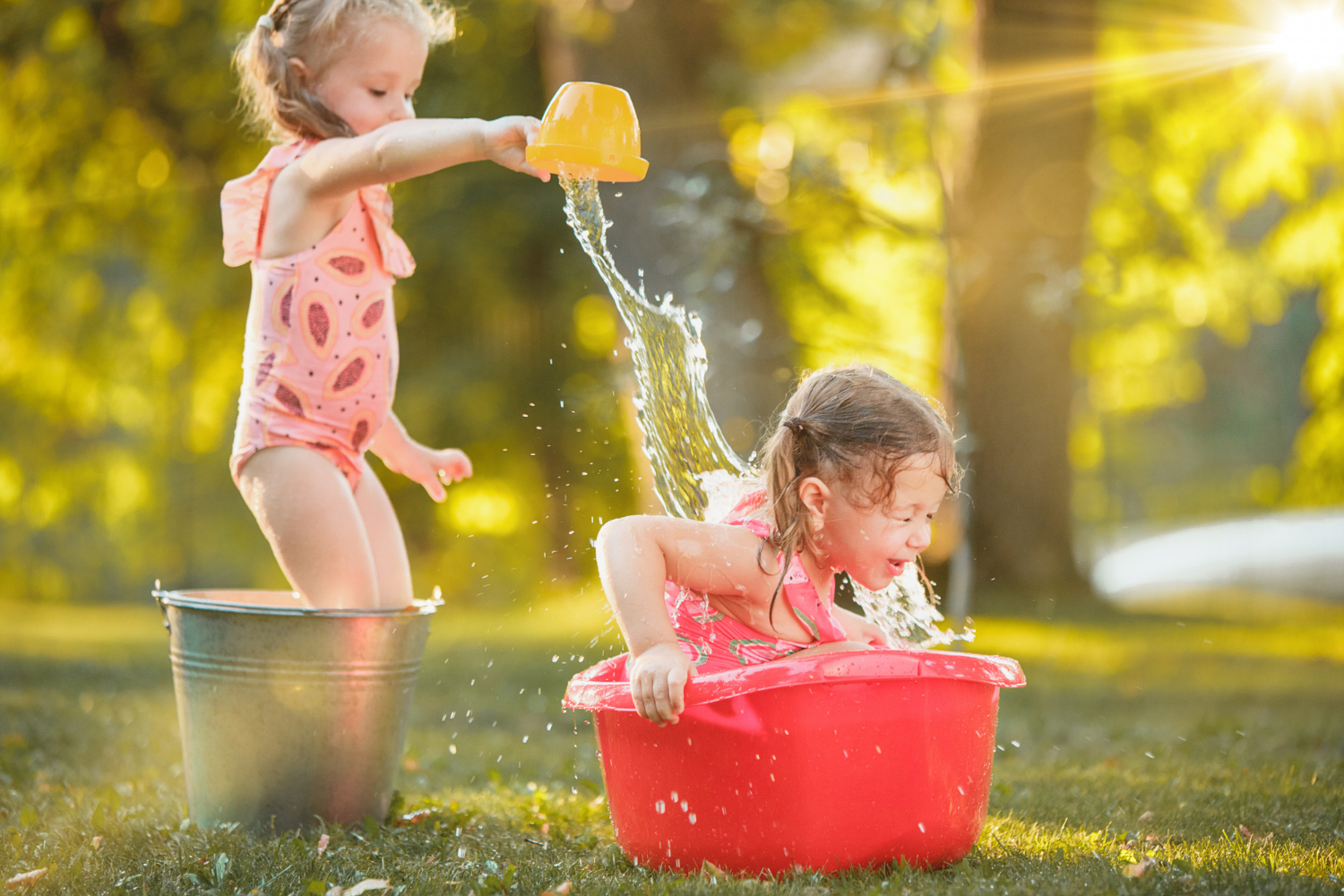The great thing about water experiments is: kids love water and they love science experiments, too! Needless to say, when you combine the two, you get activities that can keep them fascinated for hours. No excuses here, for saying you don’t have that elaborate science equipment for out-of-classroom experiments. All you need (apart from a few other common items) is good old water!
Simple Water Experiments for Preschoolers
Looking to ‘cool off’ with the most amazing water experiments? Here’s a look at our list of the very best.
A Boat that Floats
Water experiments like this one are great because of the fun ‘trial and error’ involved.
What you need: Some aluminum foil, marbles
The Experiment: Children have to use aluminum foil to create a boat that can hold the most marbles. More often than not, you will see kids try and create boats streamlined like speedboats, rather than high-walled ones that can displace more water, which in turn serves to hold the marbles up.
An Oily Affair
One of the most intriguing water experiments for kids.
What you need: A large container, water, and oil.
The Experiment: Fill the container with equal parts oil and water. Before you do so, ask your child what will happen when you mix the two together. On observing they don’t mix (die to the heaviness or density of water), ask them why.
Tip: You want to add food colouring to this ‘mixture’ using an eyedropper. Your child will be enthralled to see it not mix with the oil but rather go to the bottom where it will dissolve into tiny ‘firework-like’ explosions.
Transpiration Fun
Water experiments that involve nature are really cool.
What you need: Some freshly cut white flower stems, cups, food colouring.
The Experiment: Place the white flower stems in cups filled with food coloring. Watch your preschooler get enthralled as they see the white flowers get infused with color, owing to the food colouring traveling up those stems. This one’s great to teach children how water travels through plants, from the stems to the leaves and flowers.
An Introduction to Surface Tension
Science experiments with water help children learn about various concepts, like The Marangoni Effect, taught by this one.
What you need: 1 paper plate, detergent, white paper, water.
The Experiment: Pour some water into the paper plate to create a ‘shallow’ experiment environment. Then sprinkle white pepper at the top before getting your child to add a drop of detergent to the center of the plate. Watch the pepper gravitate towards the edge after that drop falls. The detergent reduces the surface tension in the center of the plate, and the higher surface tension at the edge, pulls the pepper away from the center.
Ice Cube Exploring Fun
Water experiments with ice? Always a great idea!
What you need: Ice cubes, some plastic containers.
The Experiment: Let kids place ice cubes in the plastic containers, to see what happens to them. You can make this even more exciting by taking it outdoors. They can see how the ice cubes dissolve in the sun as opposed to in the shade. You can even have them place those cubes in warm and cold water, to see the different rates of melting.
The Sink or Float Guessing Game
Learning about the properties of water should be fun for kids, and what better way to do that than play a game?
What you need: Water, a bucket, various objects like marbles, ice cubes, cotton balls, etc.
The Experiment: Fill the bucket with water. Kids have to guess if the proposed object (to be tossed in the water-filled bucket) will ‘sink’ or ‘float’. This one’s great for learning about ‘buoyancy’ and ‘density’.
Rainbow in Water
Don’t we all love rainbows? The pot of gold at the end of this rainbow, is learning! Surely one of the cooler water experiments.
What you need: A glass of water, a piece of white paper and loads of sunlight.
The Experiment: Place a white paper below a glass of water placed in direct sunlight. See that rainbow? Amazing, isn’t it? The science behind this one’s simple: the light coming through the water droplets, is refracted into the colors of the rainbow.
Understanding Erosion
Simple experiments that mimic real-life events, undoubtedly make it to that ‘top water experiments’ list.
What you need: Sand, dirt, water.
The Experiment: Have your kid pour water over a pile of sand, first slowly, and then more quickly. Ask them what the difference in result is for each of those instances. Next, use dirt instead of sand. You might want to tell them how this mimics soil erosion in case of floods.
The Bending Pencil Experiment
Water experiments that ‘feel like magic’, are the best!
What you need:/b> A glass, some water, a pencil
The Experiment: Fill that glass two-thirds with water and place the pencil in it in such a way that it is tipped to one side. Watch your child get amazed as the pencil ‘bends’, as though by magic. Tell them that light bends via traveling from air that has a lower density, to water that has a higher density, hence the illusion of the pencil bending. Another cool experiment to teach your child about the wonders of refraction.
Witnessing Evaporation
Water experiments like this one are close to being magical, too.
What you need: Water, a clear plastic cup, a permanent marker and plenty of sunlight.
The Experiment: Fill the cup with around two-thirds water. Mark the water level line with the marker and place the cup by a sunny window. Mark the diminishing level each hour as the water evaporates, and ask your kids how the water ‘disappeared’.
Fun experiments with water might just take that phrase ‘I can’t get my kid out of the water’ to another level altogether. Only this time, it’s not a complaint! With cool water experiments like the ones outlined in this article, your kids will learn loads, and have oodles of fun, too.
EuroKids focuses on providing early childhood education. Their curriculum EUNOIA helps children grow holistically in a home-like environment.
















